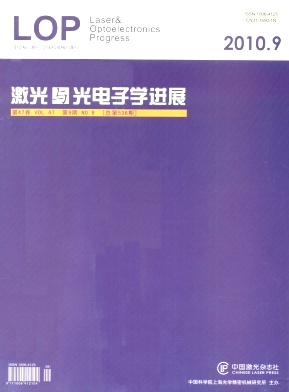激光与光电子学进展, 2010, 47 (9): 091406, 网络出版: 2010-08-13
碘原子发生技术研究进展
Research Progress of Atomic Iodine Generation
氧碘化学激光器(COIL) 原子碘 碘原子 放电解离 化学法 chemical oxygen-iodine laser(COIL) atomic iodine generator iodine atoms discharge dissociation chemical methods
摘要
在传统的氧碘化学激光器(COIL)中,一般是直接向单重态氧气流中加入碘分子,通过消耗单重态氧的能量来解离碘分子获得基态碘原子,这种加碘方式在COIL发展中存在着较大的局限性,限制了其小信号增益、输出功率以及化学效率。相反,直接加入碘原子的技术不但可以避免这些缺点,还可以拓宽COIL的应用领域范围,因此碘原子发生技术成为近年来国际上气流化学激光领域的研究热点之一。介绍了放电解离产生碘原子的研究进展和化学法碘原子发生的研究历程以及最新进展,归纳整理了化学法碘原子发生器研究中的关键技术和问题,预测了未来的发展趋势,指出了发展过程中需要解决的问题。
Abstract
In conventional chemical oxygen-iodine lasers (COIL),molecular iodine is injected directly into the main gas flow of singlet delta oxygen. Then ground state atomic iodine is obtained by the dissociation of molecular iodine with the consumption of energy of singlet delta oxygen molecules. This way of atomic iodine generation limits the small signal gain,output power,and chemical efficiency in the developments of COIL. In contrast,an alternative technique of injecting atomic iodine directly can not only avoid the above metioned drawbacks,but also broaden the application field of COIL. Recently,a great deal of efforts are devoted to new methods in which the ground state atomic iodine is produced by either discharge dissiciation or chemical reactions. The histroy of atomic iodine generation developments and recent research progress of atomic iodine generation by electrical discahrge methods and chemical methods are presented. The critical techniques of atomic iodine generation are summarized. The development trends are predicted and problems needed to be solved are pointed out.
李留成, 唐书凯, 多丽萍. 碘原子发生技术研究进展[J]. 激光与光电子学进展, 2010, 47(9): 091406. Li Liucheng, Tang Shukai, DuoLiping. Research Progress of Atomic Iodine Generation[J]. Laser & Optoelectronics Progress, 2010, 47(9): 091406.





